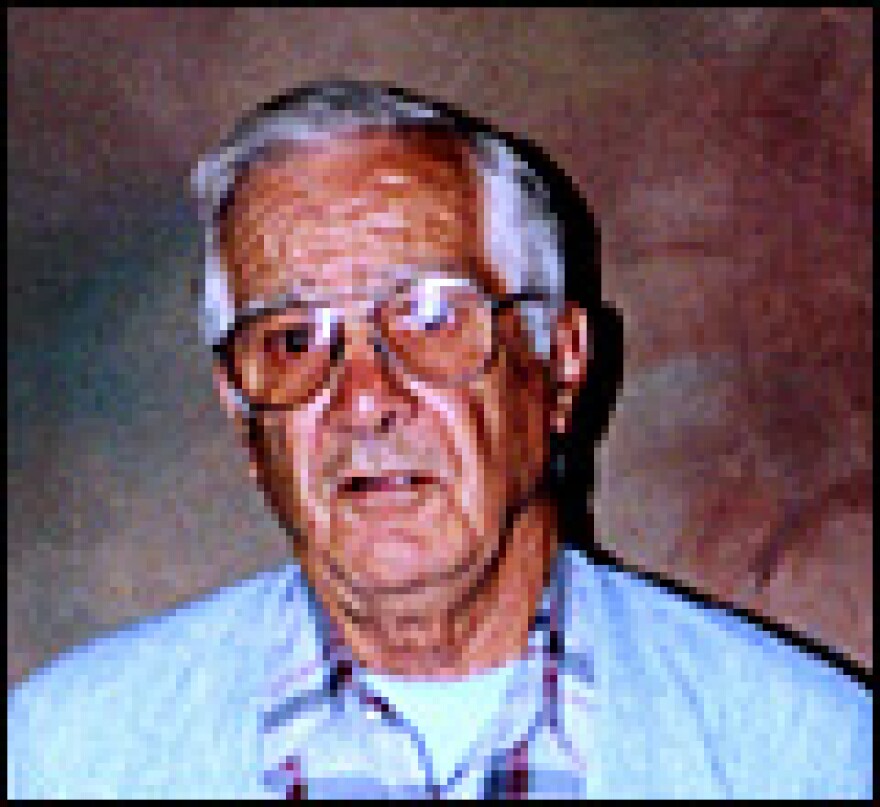







The United Nations continues to debate action regarding Iraq's armaments, considered so terrible that the very idea of them may provoke war -- weapons of mass destruction. To some, these weapons seem all the more frightening now because of worries they could fall into the hands of terrorists. For National Geographic's Radio Expeditions, NPR's Alex Chadwick visited Trinity, the New Mexico site where the most terrifying weapon ever -- the atomic bomb -- was born.
There were fearsome enough weapons before World War II, including poison gas and germ warfare. But even as fascism took hold in Germany in the 1930s, physicists were devising a weapon far more powerful, one that would split the basic elements of matter apart to create a burst of energy -- and a bomb -- like nothing known before. As the world slid into the war, scientists in the United States, including many refugees from Europe, convinced the government to create a crash program to build the first of these weapons. Led by physicist J. Robert Oppenheimer, that effort came to be known as the Manhattan Project.
Under the Manhattan Project, several secret facilities were set up to build and test bomb components. At Los Alamos, a remote outpost in New Mexico, Oppenheimer gathered the finest minds in physics to develop and design an atomic bomb. To test their new weapon, the scientists chose a desolate stretch of uninhabited, government-owned land in the New Mexico desert. They code-named the site Trinity. There, on July 16, 1945, the world's first atomic bomb was detonated, and the nuclear age exploded into existence.
Witnesses to the test at Trinity still survive. Felix de Paula was an 18-year-old Army private stationed at the secret New Mexico outpost when he was aroused from sleep in the pre-dawn hours that July morning and handed a pair of welder's glasses.
"All of a sudden it went off, and the whole area completely lit up like it was daylight," de Paula recalls. "Then we felt the shock wave and the heat wave [from] something that's 10 to 15 miles away."
Now part of the White Sands Missile Range, Trinity remains a secretive place: It is open to the public just two days of the year, on the first Saturday of October and April. Tourists who visit the area must follow a narrow road through sage and cactus range that runs for miles toward a line of soft mountains in the east and south. Then, they reach a parking area and take a quarter-mile-long path toward the mountains that leads to a couple of acres of ground enclosed by an eight-foot chain-link fence. Ground zero.
Like many who come to the site, Bill Wallace, a preacher from Clovis, N.M., says he was drawn by a sense of history.
"I came out here because I was just a lad when this event took place," Wallace says. "I've always wanted to be where history was made. This changed the whole world."
Indeed, less than a month after the Trinity test, the United States dropped two atomic bombs on the Japanese cities of Hiroshima and Nagasaki, killing more than 100,000 people and forcing Japan to surrender.
Yet today, little evidence remains of the awesome power unleashed at Trinity. The depression left by the blast at ground zero is barely visible. The remaining radiation is faint, comparable to what one is exposed to during a cross-country flight. The only real marker is a strangely unimposing obelisk, like a highway marker for some forlorn, forgotten incident. The place holds power anyway; visitors stand quietly while trying to comprehend it.
"What is the reason that we all come here and how can you capture that visibly?" reflects Nina Becker, a recent graduate of Smith College who was there to photograph the site. "It's really not a visual experience. They're feelings; they're intuitions; they're emotions."
Others, like Chad Robinson, a graduate student at the University of New Mexico, find parallels to our own times.
"There's been so much national attention on [President George W.] Bush's phrase of 'weapons of mass destruction'," Robinson notes. "Standing here in the place where the first successful test happened, it just kind of makes you think about these places in terms of the magnitude the bomb can have."
Copyright 2022 NPR. To see more, visit https://www.npr.org.





